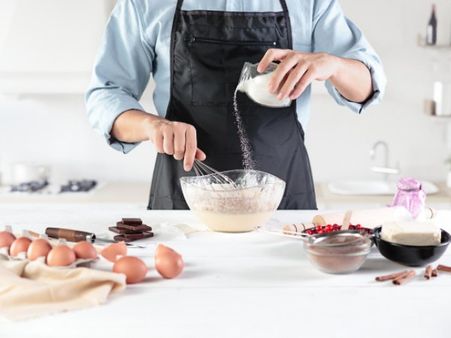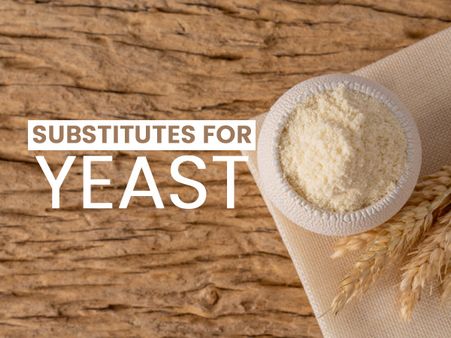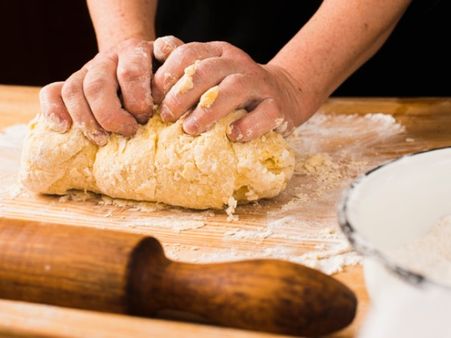Just In
- 6 hrs ago

- 7 hrs ago

- 11 hrs ago

- 12 hrs ago

Don't Miss
- Sports
 Olympic Selection Trials: Ashi-Swapnil Shine In 3-Position Shooting
Olympic Selection Trials: Ashi-Swapnil Shine In 3-Position Shooting - News
 Senator Lambie Calls For Elon Musk's Imprisonment Over Wakeley Church Stabbing Posts
Senator Lambie Calls For Elon Musk's Imprisonment Over Wakeley Church Stabbing Posts - Movies
 Mirzapur 3 OTT Release Date, Platform: When Will Mirzapur Season 3 Premiere On Amazon Prime Video?
Mirzapur 3 OTT Release Date, Platform: When Will Mirzapur Season 3 Premiere On Amazon Prime Video? - Finance
 25% Dividend Record Date: Logistic Stock Nears 1-Year High And It Belongs To Mahindra; Motilal Neutral
25% Dividend Record Date: Logistic Stock Nears 1-Year High And It Belongs To Mahindra; Motilal Neutral - Education
 Telangana Inter Manabadi 1st and 2nd Year Results 2024 to be Declared Tomorrow
Telangana Inter Manabadi 1st and 2nd Year Results 2024 to be Declared Tomorrow - Automobiles
 Chrysler Pacifica Marks Seven Years As Most Awarded Minivan With New Campaign
Chrysler Pacifica Marks Seven Years As Most Awarded Minivan With New Campaign - Technology
 Xiaomi Robot Vacuum Cleaner S10, Handheld Garment Steamer, and Redmi Buds 5A Launched in India
Xiaomi Robot Vacuum Cleaner S10, Handheld Garment Steamer, and Redmi Buds 5A Launched in India - Travel
Kurnool's Hidden Gems: A Guide To Exploring India's Lesser-Known Treasures
Ran Out Of Yeast? Here Are Some Easy Yeast Substitutes
The central ingredient in baking, cooking, and brewing, yeast is used for 'raising' the dough, making it soft. Yeast is of different types and is used for baking, cooking and brewing. Types of yeast used in cooking are nutritional yeast and yeast extract, both of which are used as a flavouring and to give a healthy boost to the recipes. For brewing purposes, two types of yeast are used, one for brewing ale and one for a lager.

Baker's yeast or yeast used in baking is available in several forms such as active dry, fresh (or cake), liquid, and instant. Yeast is basically a living organism, where its fermentation process provides a fresh flavour and texture to the food/baked goods. When combined with liquid and sugar, yeast makes dough rise, stretching and expanding it.

There are more than 1,500 species of yeast, but the one commonly used for cooking and baking purposes is saccharomyces cerevisiae, which gives the baked goods that soft, airy structure and the beer bubbly. When you are out of yeast and do not want to run to the store for more, the solution could right there be in your kitchen. Read on to know about the best yeast substitutes.

1. Baking Soda And Lemon Juice (Acid)
The combination of yeast, flour, water and sugars releases carbon dioxide, which in turn releases carbon dioxide and makes the bread rise. By combining baking soda and lemon juice, you can achieve the same results, that is, releasing the carbon dioxide and making the dough soft [1].
How to do:
- Take baking soda in 1:1 ratio (swap the baking soda for yeast) and add lemon juice (50-50) and mix well.
- If a recipe calls for 2 teaspoons of yeast, simply use 1 teaspoon of baking soda and 1 teaspoon of an acid.
- You can use buttermilk, cream of tartar, or milk combined with an equal part of vinegar as your acid.
Note: For the reaction to work properly, get the dough in the oven as soon after the final ingredients are added. For the best results, use fresh baking soda.

2. Baking Powder
A combination of baking soda and an acid, baking powder is a kitchen staple in most houses. Baking powder acts as a leavening agent like yeast and works by reacting with heat and with liquid [2][3]. As the baking powder is quick to react when exposed to heat or liquid, it does not require additional time for dough-rising.
How to do:
- You can replace yeast with baking powder at a one-to-one ratio.
- This yeast replacement best works for pancakes, cornbread, biscuits, and cakes.
Note: While baking powder causes baked goods to rise rapidly, it is not to the same extent as yeast.

3. Sourdough Starter
Sourdough bread was all the rage this pandemic, with home bakers religiously baking sourdough bread, adding it to the list of the COVID-19 baking craze [4]. The sourdough starter contains naturally occurring yeast and is made from flour and water. Using sourdough starter will leave a tangy flavour, same as the one produce when through the natural fermentation process of yeast [5].
How to do:
- Use 1 cup (300 grams) of sourdough starter to replace one 2-teaspoon package of yeast.
- Fermentation by a sourdough starter works in the same way as instant yeast.
- Day 1: Combine ½ cup of flour and ½ cup of water in a large glass container and cover with plastic wrap or a clean cotton cloth and leave out at room temperature.
- Day 2: Add ½ cup of flour and ½ cup of water and mix it well. Cover loosely and leave at room temperature.
- Day 3: Repeat the steps in day 2 (there should be a good amount of bubbles in it).
- Day 4: Repeat the steps in day 2; the flour will have a sour smell and more bubbles.
- Day 5: Repeat the steps in day 2 and you may start using it by this day.
How to make a sourdough starter?
The total time required to make a sourdough starter is 5 days (minimum), and once it is made, you can store it and use for days.
Ingredients: 2 ½ cups (600 g) of all-purpose flour and 2 ½ cups (600 ml) of water.
Directions:
Note: To maintain your sourdough starter beyond day 5, store it in an airtight container in the refrigerator.

Frequently Asked Questions
1. Can I substitute active dry yeast for instant yeast and vice versa?
Ans: Yes. Active dry yeast has a moderate rate of rising and instant dry yeast has a faster rate of rising. Active dry and instant yeast can be used interchangeably in recipes, that is 1:1 ratio.
2. Can I store dry yeast in the freezer?
Ans: Yes. Just remember to place the yeast towards the back of the freezer so it is not exposed to temperature changes when you open the door.
3. Do I refrigerate or freeze-dry yeast after opening?
Ans: Dry yeast is perishable. So once your package is opened, the yeast must be refrigerated or frozen in an airtight container. Use within 4 months if refrigerated and 6 months if frozen.

On A Final Note…
While there is no perfect substitution for yeast due to its specific properties, using these substitutes in place of yeast occasionally (and when you are all out of yeast) can salvage your baked goods.
-
 basicsBreast Yeast Infection: Causes, Symptoms, Risk Factors, Treatments And Prevention
basicsBreast Yeast Infection: Causes, Symptoms, Risk Factors, Treatments And Prevention -
 wellnessHow To Treat Intertrigo: Safe And Effective Home Remedies
wellnessHow To Treat Intertrigo: Safe And Effective Home Remedies -
 disorders cureWhat Is Christmas Tree Syndrome? Causes, Symptoms And Prevention
disorders cureWhat Is Christmas Tree Syndrome? Causes, Symptoms And Prevention -
 disorders cureAuto-Brewery Syndrome (ABS): Causes, Symptoms, Risk Factors, Diagnosis And Treatment
disorders cureAuto-Brewery Syndrome (ABS): Causes, Symptoms, Risk Factors, Diagnosis And Treatment -
 wellnessEverything You Need To Know About Vaginal Yeast Infection
wellnessEverything You Need To Know About Vaginal Yeast Infection -
 wellnessHere Are The Side Effects Of Using Lubes!!
wellnessHere Are The Side Effects Of Using Lubes!! -
 wellness7 Places That Can Be Affected By Yeast Infection Apart From The Vagina!
wellness7 Places That Can Be Affected By Yeast Infection Apart From The Vagina! -
 nutritionProbiotic-rich Foods & Their Healthy Recipes To Treat The Gut & Vaginal Yeast Infections
nutritionProbiotic-rich Foods & Their Healthy Recipes To Treat The Gut & Vaginal Yeast Infections -
 wellnessKill Fungi And Bacteria In Your Woman Parts With The Help Of These Natural Remedies
wellnessKill Fungi And Bacteria In Your Woman Parts With The Help Of These Natural Remedies -
 wellnessWhat Happens If You Don't Clean Your Belly Button?
wellnessWhat Happens If You Don't Clean Your Belly Button? -
 wellnessFoods You Need To Eat & Avoid To Maintain Vaginal Health
wellnessFoods You Need To Eat & Avoid To Maintain Vaginal Health -
 disorders cureTop 5 Home Remedies To Treat Vaginal Thrush
disorders cureTop 5 Home Remedies To Treat Vaginal Thrush


 Click it and Unblock the Notifications
Click it and Unblock the Notifications




